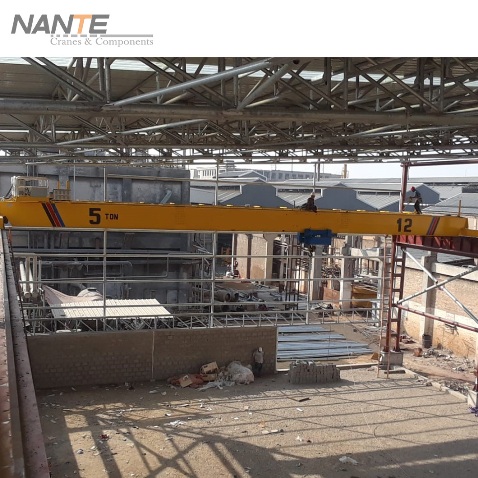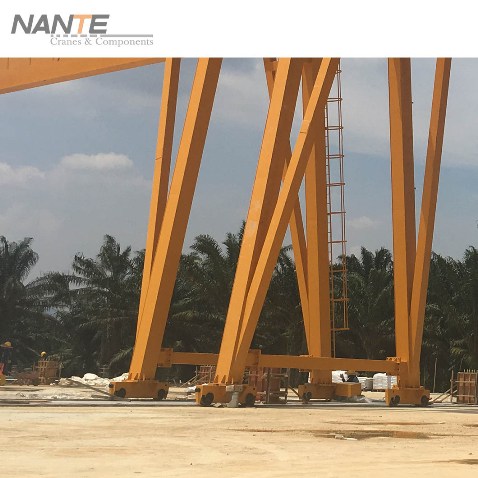Rails for Light duty Duty Cranes – Flat Bar Rail & Square Bar Rail
Date: 2024-03-01 Share:
In the field of lifting machinery, light duty cranes play a vital role, they are widely used in warehouses, factories, terminals and other places, responsible for efficiently and accurately completing the light duty to medium-weight material handling tasks. As a key component of light duty cranes, the choice of track system is directly related to the stability, safety and efficiency of the crane. Among many rail systems, Flat Bar Rail and Square Bar Rail are favored for their unique advantages and features. In this paper, we will discuss in detail the application of these two rail systems in light duty cranes, and analyse their advantages and disadvantages, in order to provide useful reference for practitioners in related fields.
Flat rail in the application of light duty cranes

Flat rail, as the name suggests, is a track system with a flat top, and its cross-section shape is usually rectangular or trapezoidal. The main features of flat rail are simple structure, easy installation and low cost, so it is widely used in light duty cranes.
Firstly, the flat top of the flat rail provides a good support surface for the traveling wheels of the crane, which enables the traveling wheels to run along the rail smoothly and reduces the vibration and noise caused by the unevenness of the rail. At the same time, the rectangular or trapezoidal cross-section of the flat rail can effectively disperse the pressure exerted by the crane on the rail, and improve the carrying capacity of the rail.
Secondly, the installation of flat rails is relatively simple and does not require complex processing and installation equipment. Usually, it is only necessary to fix the flat rail on the top of the building or under the beam, and then connect the sections of the rail through the connectors. This type of installation not only saves time and costs, but also reduces the risks involved in the installation process.
In addition, flat rails have a wide range of applications and can be used in straight, curved and diagonal layouts. Whether it is an indoor warehouse or an outdoor dock, flat rails provide a stable and reliable running path for light duty cranes. At the same time, flat rails can also be customized to meet the special needs of different working environments.
However, due to their relatively simple structure and limited load-carrying capacity, flat rails are mainly suitable for light duty to medium-weight material handling tasks. For the need to deal with heavy goods or to withstand the larger impact of the scene, the flat rail may not be able to meet the requirements.
Square rail in the application of light duty cranes
Square rails are vertically mounted rails that are used to support and stabilize cranes. These rails are characterized by their square cross-section, which provides exceptional strength and stiffness. The square profile of these tracks allows them to support heavy loads without deflection or deformation.

In addition, Square rail is made of high-strength materials, which typically have a longer service life. It can withstand prolonged use of loads and harsh environments, providing reliable support for cranes.
Due to the larger cross-section size of the square rail, the contact area between the traveling wheels and the rail increases accordingly, thus reducing wear and friction. At the same time, the square rail is usually made of rust-proof and corrosion-resistant materials, which can maintain a long service life in the harsh working environment.
However, due to its complex structure and high manufacturing precision, the cost of square rails is relatively high. This limits the popularity and application scope of square rails in light duty cranes to a certain extent. Also, the installation and maintenance of the square rail is relatively complex, requiring professional technical and equipment support. In the installation process, it is necessary to ensure the precision and stability of the connection between the various segments of the track; in the maintenance process, it is necessary to regularly check the wear and deformation of the track, and repair and replace it in a timely manner.
Comparative analysis of flat rail and square rail
The flat rail and square rail in the light duty crane each have their features. Flat rail is widely used in various working environments with its simple structure, easy installation, low cost. The square rail performs very well both in material strength and positioning accuracy, and can also be widely used.
In actual application, you should choose the right rail system according to the specific working environment. For the work of lighter workloads, you can choose a flat rail to reduce costs and improve efficiency; for the need to deal with relatively heavier goods, you should choose the square rail to ensure the stability and safety of the crane.
In conclusion, as key components in cranes, flat rails and square rails play an irreplaceable role in their respective applications. When selecting the rail system, comprehensive consideration should be made according to the actual working environment and needs, so as to ensure the stability, safety and working efficiency of the crane. At the same time, the use and maintenance process also need to be based on the characteristics of the track system for the corresponding operation and management, in order to extend its service life and improve work efficiency.
 English
English






